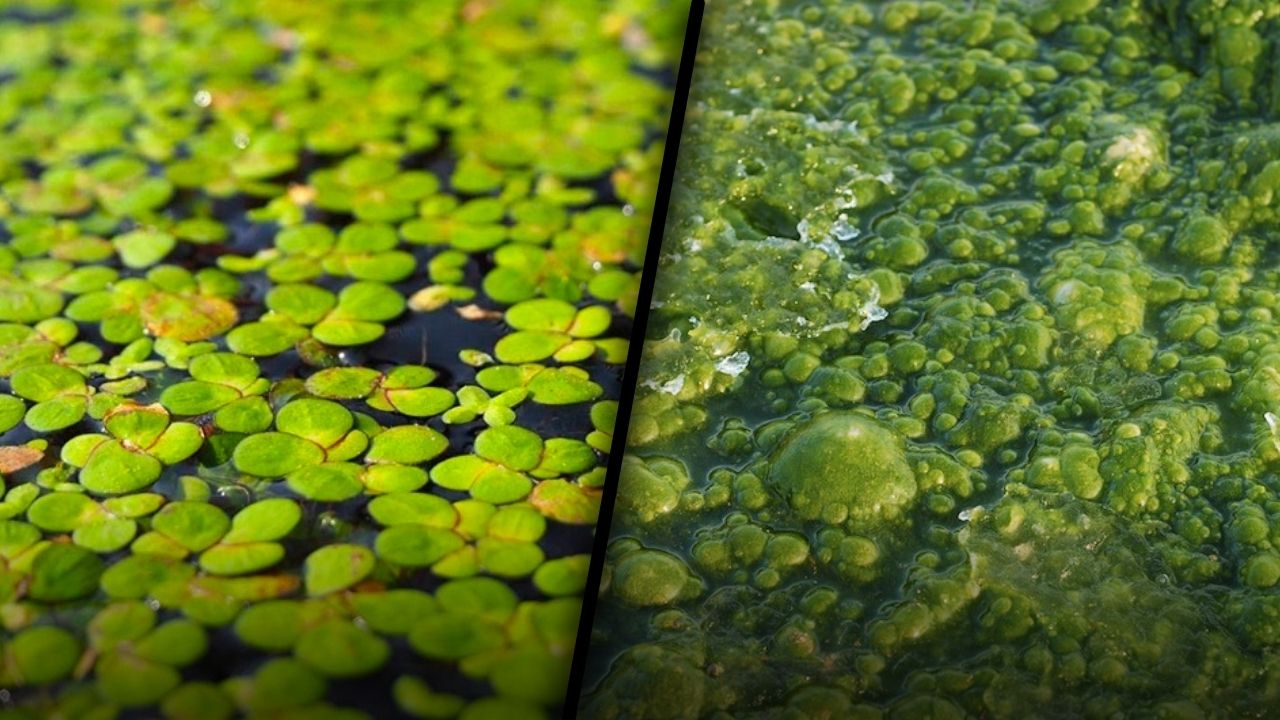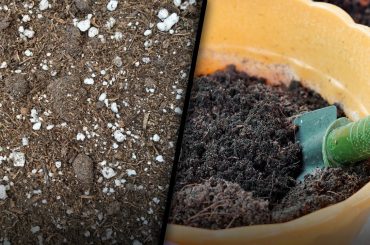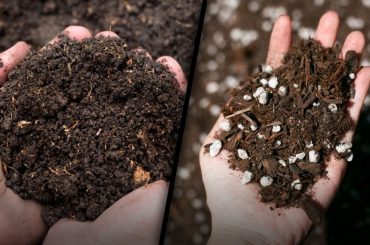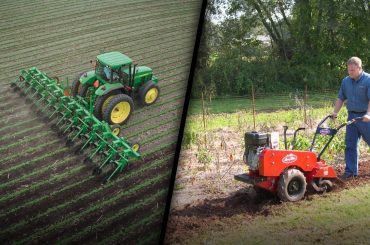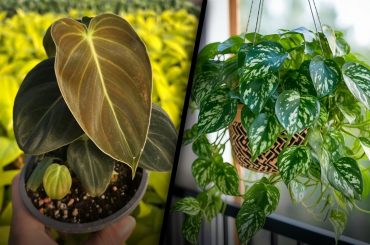Green aquatic plants that grow on the surface of ponds and other still bodies of water are duckweed and algae (singular alga). Duckweed and algae have similar habitats, so they are sometimes found together. Although most landlubbers are familiar with algae, duckweed is less well known. It is very easy to tell the difference between these two plants, despite their many commonalities. How do you distinguish algae from duckweed? Read on to find out.
Duckweed
Duckweed grows in large colonies and is an exceptionally small aquatic plant. The green mass may look like algae from a distance. The growth of duckweed is similar to that of pond lilies.
Water plants, such as duckweed, have roots that descend into the water, while their leaves float on top. By producing new plants, duckweed spreads by breaking away from the original and growing on its own.
Algae
A type of algae is a single-celled, photosynthesizing organism that grows in standing water. It is an umbrella term for many types of algae. Viridiplantae, also known as pond scum, is a common alga.
We recognize algae as a large green mass of cells connected to each other, forming long stringy threads.
Duckweed vs. Algae: Appearance
When viewed from a distance, duckweed and algae seem similar, flat green masses on the water’s surface. However, as they are approached, they appear vastly different.
Until you’re very close, you may not be able to tell that duckweed leaves are individual plants. Duckweed’s leaves will spread apart easily if you move them with your hand or stick.
As opposed to algae, which are tangled and inseparable when disturbed, algae form a connected mass of thin threads. It is common to see algae underwater, but duckweed is always on the surface of a pond. Algae form on the bottom and eventually build up to the surface.
Duckweed leaves resemble mini lily pads with their oval shape and light green color. It is more common for algae to be darker green below the surface, especially when it is farther away from the surface.
Duckweed vs. Algae: Texture
There is a noticeable difference in texture between duckweed and algae. You can tell whether duckweed or algae is floating in a pond by touching it!
The duckweed and algae are neither toxic and should not be touched, but gloves are recommended when taking a hold because of the possibility that allergic reactions will occur, other toxic plants may be present, or water bacteria may be present.
When plucked from the water, duckweed’s roots will be exposed, and the leaves will easily separate. One inch is the maximum length of the roots of duckweed. After replacing the duckweed, the water surface will once again be covered with duckweed.
When it comes to algae, it’s much tougher to put your hand through, and separating one strand from the great mass is virtually impossible. The algae will sink to the bottom of a pond once removed from it.
A duckweed leaf is smooth and solid, whereas the leaves of algae are slippery and slimy.
Where They Grow
A warm, stagnant body of water is the ideal environment for duckweed and algae to grow. It’s not unusual for them to live in the same pond, or even in similar locations due to the same growing conditions!
In still bodies of water such as ponds and lakes, duckweed and algae consume nitrogen and phosphorus deposited by animal waste and decaying plants.
Benefits
Water ecosystems benefit from duckweed and algae, which balance and maintain them, helping to avoid problems caused by excess nitrogen and phosphorus.
The roots of duckweed absorb nitrogen and phosphorus from the water, which is beneficial for the circulation of these nutrients. A duckweed’s ability to leach these elements from water makes it an effective deterrent against toxic cyanobacteria. Duckweed can thus be used as a natural water clarifier!
A duckweed or algae habitat can also be a habitat for small organisms that live in the water, such as micro-invertebrates.
Large amounts of duckweed or algae can form a protective layer on the water’s surface, blocking some sunlight and creating a habitat for plants that survive in darkness, which encourages biodiversity.
A lack of control of duckweed and algae can create problems, however.
Issues with Duckweed or Algae
A healthy pond ecosystem is characterized by duckweed and algae. There is no harm or toxicity associated with them. Both develop problems when they grow out of control and cover the entire surface of the pond.
Duckweed or algae growing so thickly that they completely cover the water’s surface, leaving minimal light to penetrate, will likely cause plant and animal life to suffer.
Both duckweed and algae are photosynthetic organisms, meaning they are primarily dependent on sunlight. These plants draw oxygen from the pond at night or during periods of cloudy weather. The water can become too oxygen-depleted if too many of these aquatic plants are present, which would be inconvenient for other plants who need the oxygen as well.
When growing Duckweed or algae, you need to be vigilant. They are both vigorous growers that will engulf an ornamental or stock pond in no time.
Getting Rid of Duckweed and Algae
Creating movement in the water is the most effective way of preventing or eradicating duckweed and algae which grow in stagnant water. Various methods, such as pumps and filtration systems, can be used to accomplish this, both naturally and artificially.
The movement of water and aeration can be increased by many different types of pumps. It is important to keep the water moving, no matter what method is used.
Hand-removal of duckweed and algae is an option, but it can be very time-consuming. Despite algae being a connected mass, duckweed isn’t connected, so it’s difficult to get everything, and since duckweed doesn’t connect, it’s difficult to get all of it.
In still bodies of water, barley straw helps improve aeration. For controlling duckweed and algae growth in ponds on farms, farmers in winter or early spring put bundles of straw wrapped in wire in the ponds.
About Cyanobacteria
Duckweed and algae are often mistaken for cyanobacteria, though they are not the same. The cyanobacteria that produce toxins can cause pond ecosystems to collapse and cause the water to be unsafe to drink. Duckweed and algae are both nontoxic, but cyanobacteria are toxic. Compared to duckweed and algae, how does cyanobacteria differ?
Cyanobacteria is a type of bacteria that is extremely small, forming a very thin, blue-green film on water when there is a large population.
There is a high possibility of this bacteria multiplying rapidly and becoming uncontrollable in the future. The cyanobacteria release toxins that destroy plant life once they establish themselves in a pond’s ecosystem. There is no danger associated with duckweed or algae, and they are easily recognizable.

